There is a lot to be said about corals: their diverse beauty, their importance for marine ecosystems and, of course, their plight against climate change and warming oceans. And yet this only begins to scratch the surface of these complex, mesmerizing and somewhat alien animals.
When I started my PhD in October 2020, I knew I was jumping in at the deep end. This would be my first ever lab based research project, and on a topic requiring much more chemistry and physics knowledge than I currently had. Oh, and then throw a pandemic into the mix. What I wasn’t expecting when I started, was how much more I was about to learn about my study organism, corals.
Most structures we recognize as coral are actually home to of hundreds to thousands of tiny creatures, called, ‘polyps’ (like you can see below). Related to anemones and jellyfish, these polyps secrete a hard external skeleton of calcium carbonate – this provides them with a home and gives rise to the branching, brainy or platy structures we see on a reef. It’s this mineralized skeleton, and how coral polyps build it, that is the subject of my PhD research.
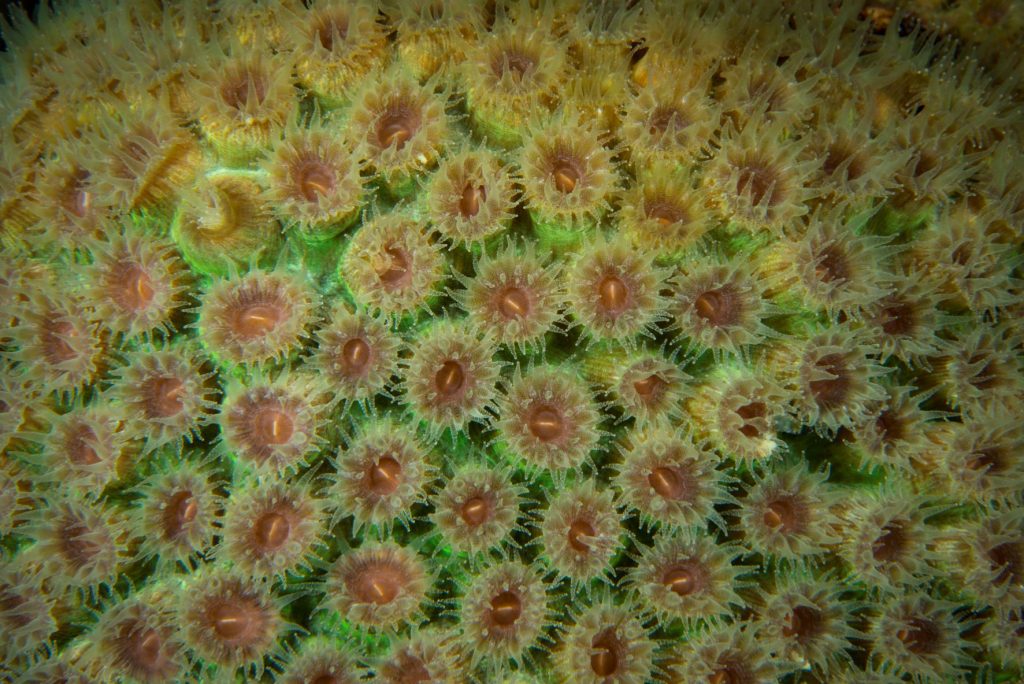
In the lab, and armed with a microscope and some coral skeletons for the first time, I was amazed by how intricate and varied the microscale architectures were. I came to learn that, at every scale, there are organized and repeatable units, such that the skeletal anatomy of an entire colony could be traced back to the organization of single crystals. It still amazes me that a colony of individual polyps can coordinate and control the very physical process of crystal growth to create such detailed structures.
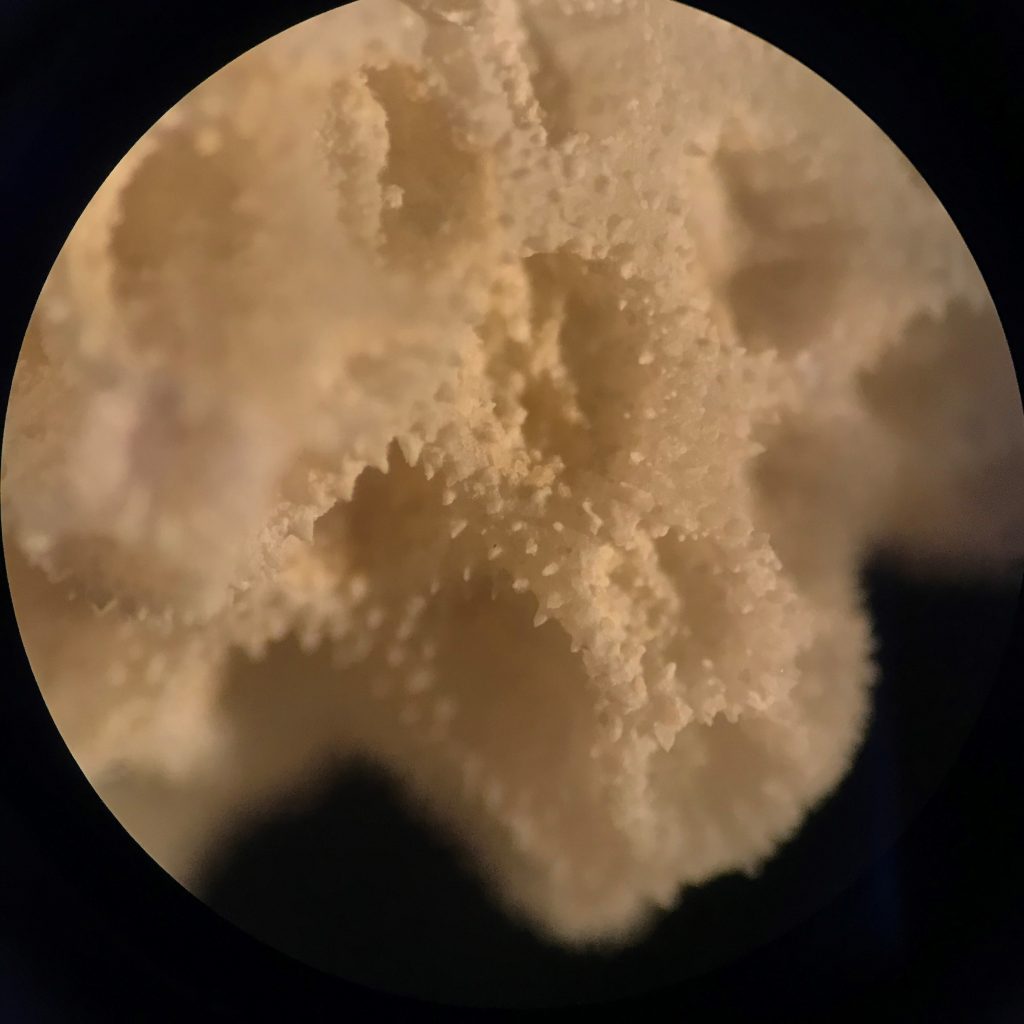
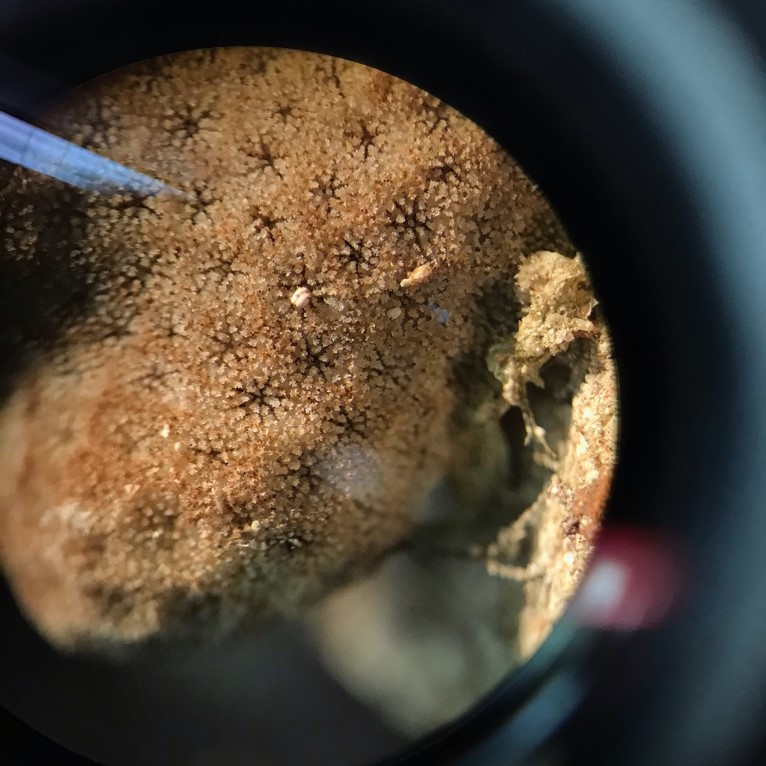
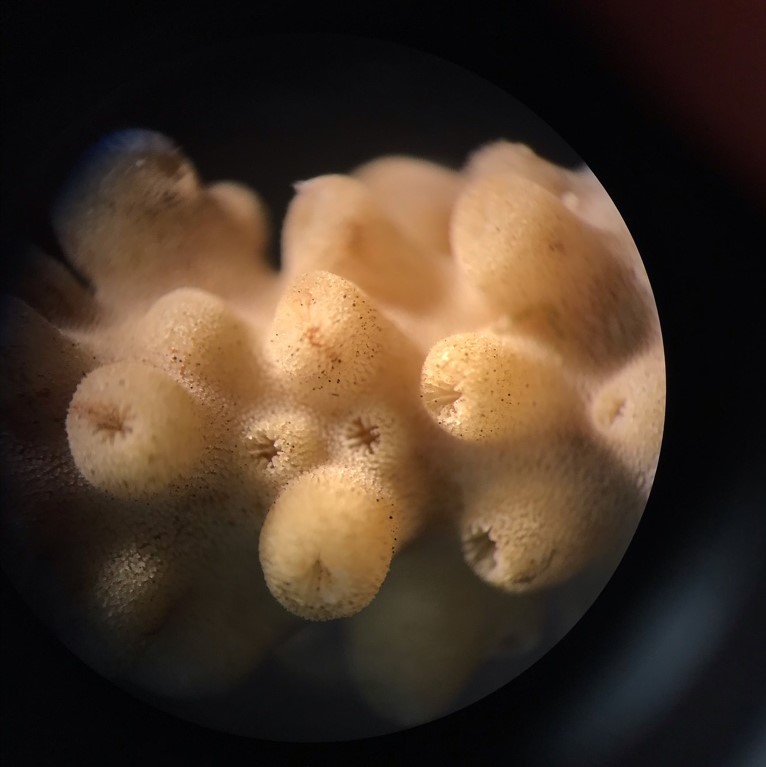
Looking down the microscope at coral textures. The polyps live in the cups seen in the lower image. Credit Madi East
Using a very high powered microscope, known as a scanning electron microscope, I have seen lacy corallite cups arranged like the petals of a rose, tessellating snowflakes and even jagged rings like sharks teeth.
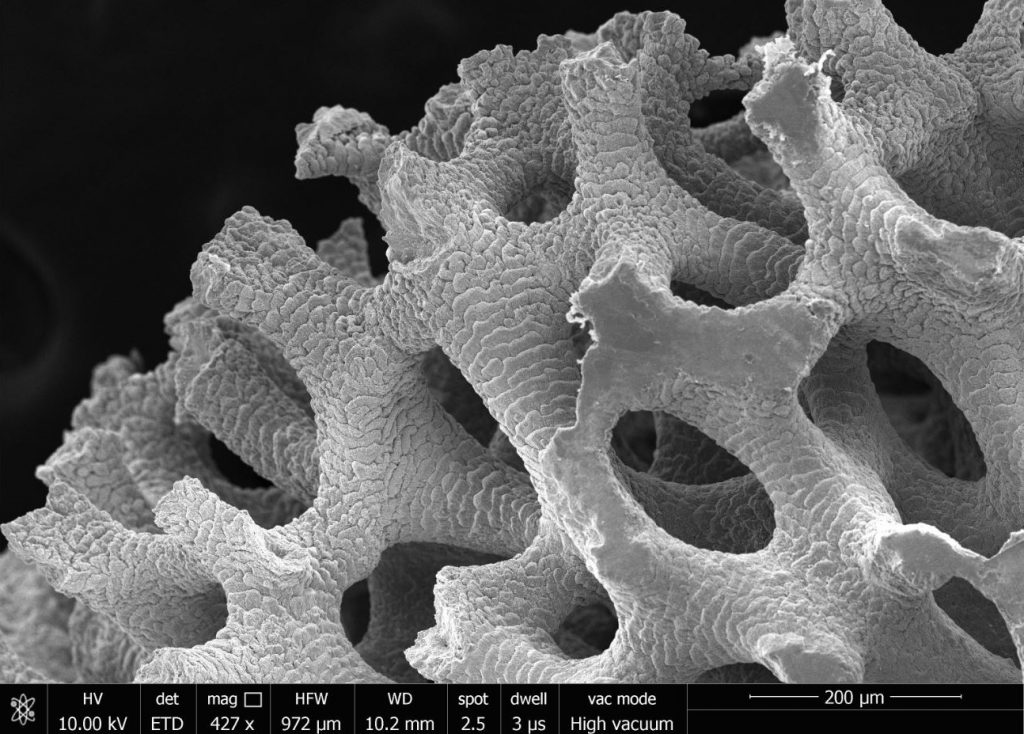
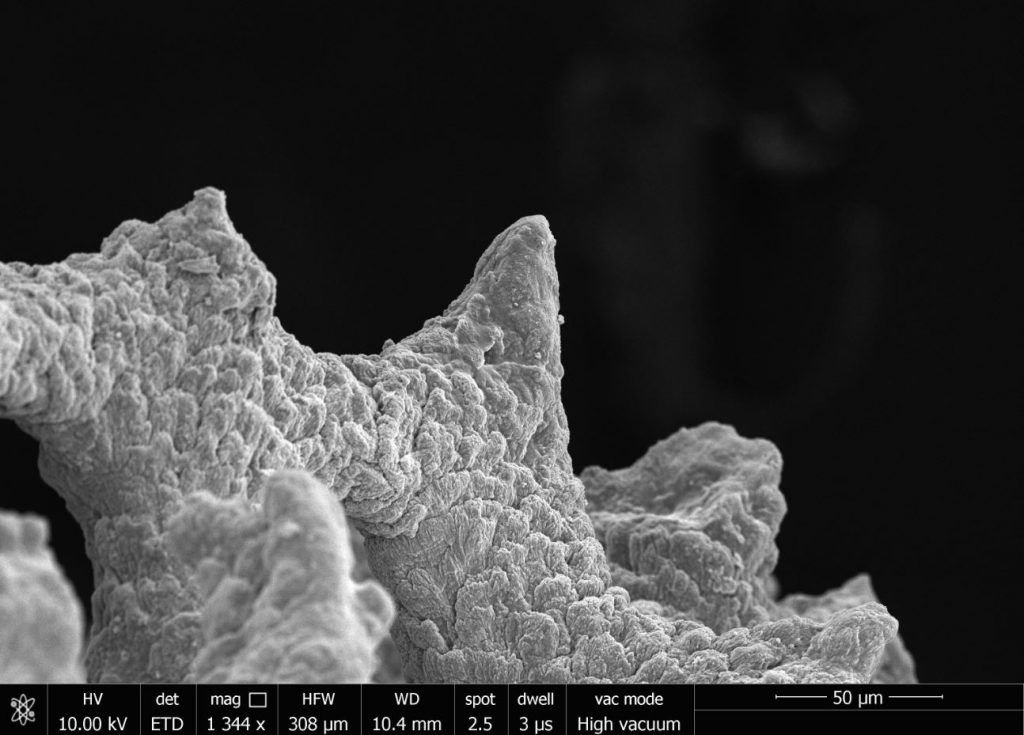
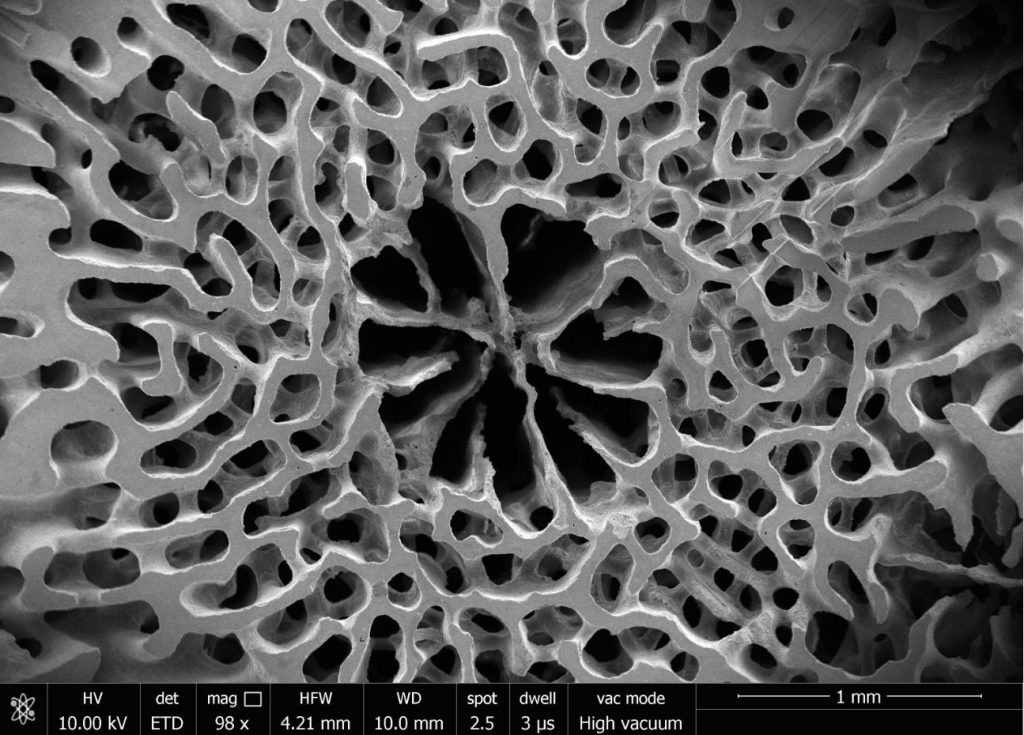
I was intrigued to learn that corals produce their own sunscreen, and may even coordinate skeletal growth with the cycle of the moon. And who knew that polyps could capture prey using harpoon stinging cells located on their tentacles? Perhaps they will capture a tiny shrimp, and then suck it down like a string of spaghetti.
…Essentially, these are some badass animals…
Though exciting, watching cute, tentacled polyps hunt for their dinner is not the aim of my project. What I am interested in is the chemistry of the skeleton in which these polyps live. As corals grow their calcium carbonate skeleton, they record variations in the seawater around them, just as ice cores capture changes in the atmosphere. They can help us answer questions like ‘what was the ocean temperature in the past?’ and ‘was the coral living at the surface, or trying to keep up with a rising sea level?’ From both the oldest corals in the sea, to those in the fossil record, corals help us put together pieces of the environmental puzzle of the past, from thousand to millions of years ago.

But like everything in science, things get a bit more complicated as you delve deeper! Sitting between the seawater and the growing crystal is a living, breathing, photosynthesizing organism. Such biological processes can influence the chemistry of the microenvironment. And then there are the organic compounds and templates that become embedded within the mineral. Like the blueprints for a house, these contribute to the final skeletal architecture. But are corals diligent foreman, or do they leave some aspects of the skeletal construction up to chance? All these variables can influence the chemical makeup of the skeleton, potentially muddying the environmental record we hope to read.
My work aims to shed light on this mysterious crystallization process, through the use of geochemical techniques. This will help me get a picture of how the chemistry and structure of corals changes in response to environmental parameters, and ask specific questions like: are the ingredients for the calcium carbonate, and various impurities, simply leaking into the site of calcification between cell walls? Or is the coral actively transporting them via pumps and bundled up in vesicles? And how do individual polyps coordinate to produce these detailed skeletal architectures we see?
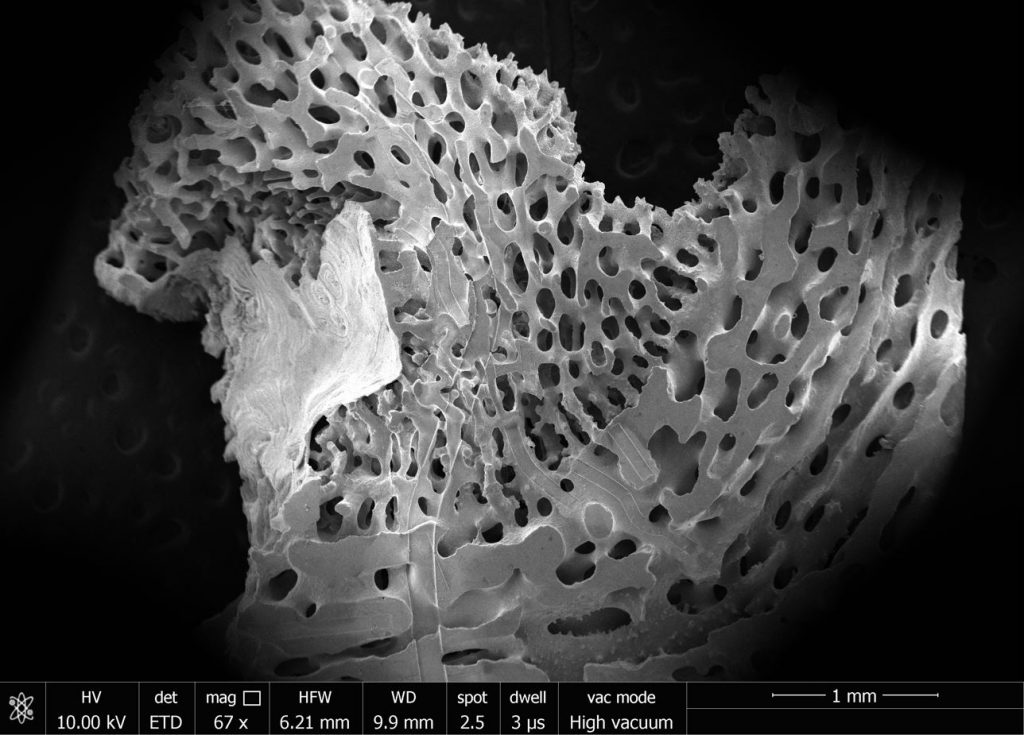
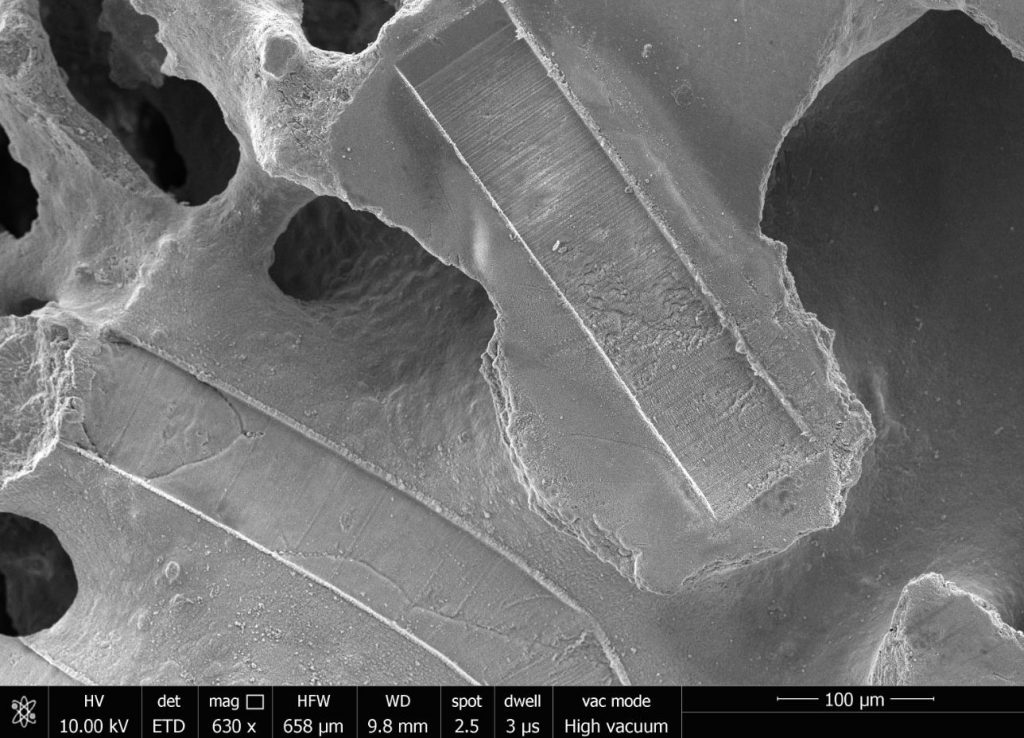
So what does this analysis actually looks like in the lab? It starts with me cutting up coral skeletons with tiny power tools, cleaning them till they sparkle, and then zapping them with a laser to reveal their chemical makeup. I have even had the chance to coat some samples in gold, and use a scanning electron microscope (SEM) to see the skeleton on the scale of individual crystals. If things go to plan I will soon be adding ‘keeping corals alive’ to this list of activities!
Corals are in a tough spot. Human driven impacts like warming oceans that lead to coral bleaching events, have the potential to wipe out reefs completely by the end of the century. If I live long enough that could be in my lifetime. Although my research may not directly contribute to the innovative techniques and immediate actions being carried out by so many across the world, I do hope that in deepening our understanding of this incredible creature, and our knowledge of what climates it has survived in the past, I can help play some part in securing it a brighter future.
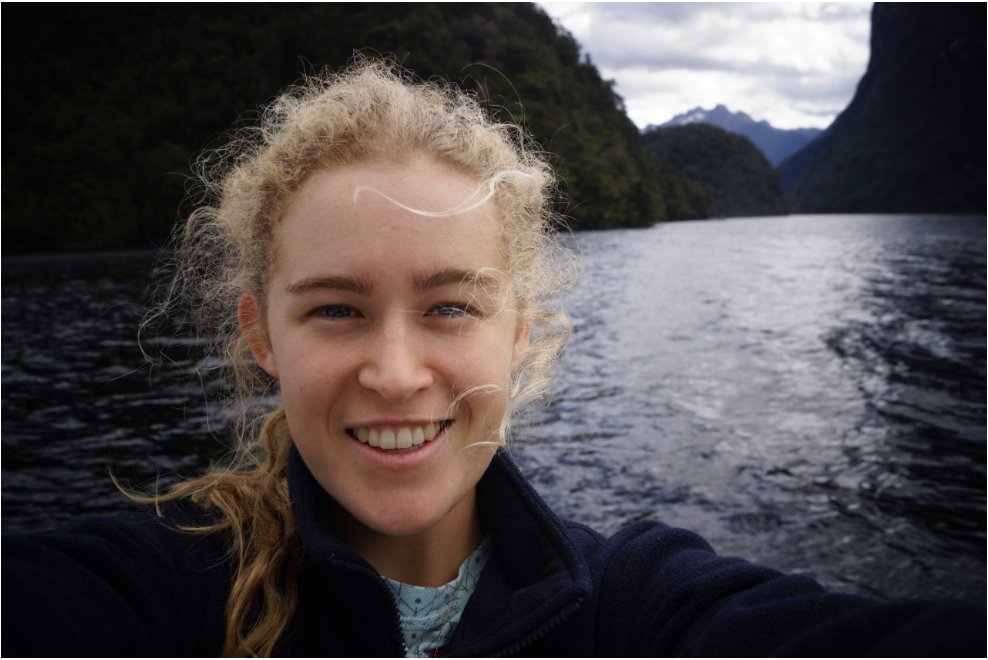
Feature image credit: Alex Mustard / Ocean Image Bank


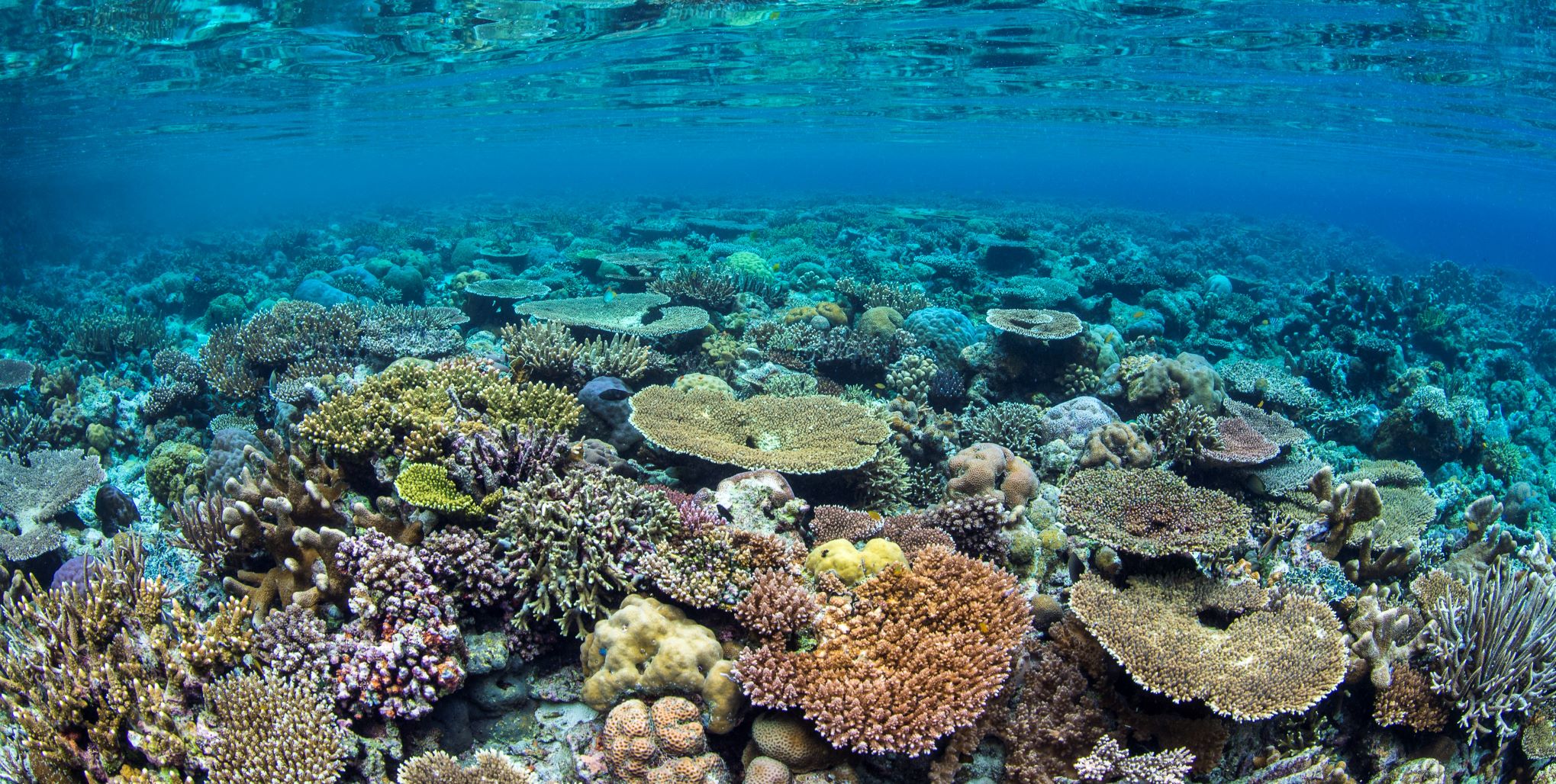
It’s wonderfull to learn of and understand the amazing things that you are working on so far from home Madi, keep up the good work we are all very proud of you.